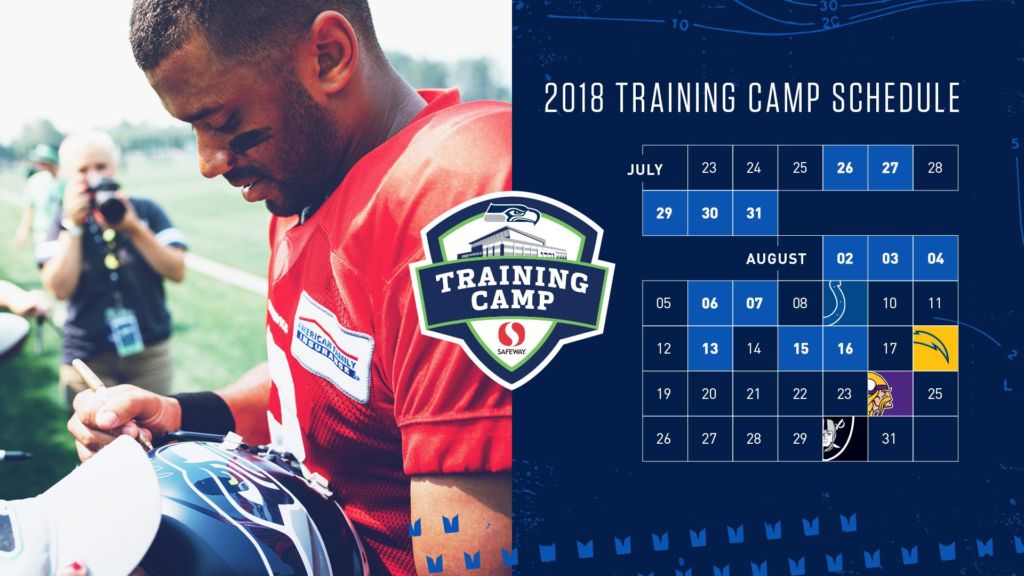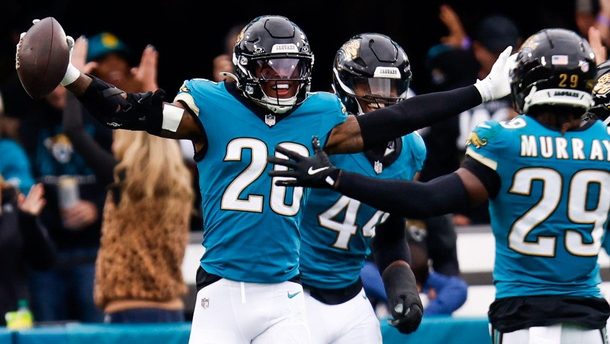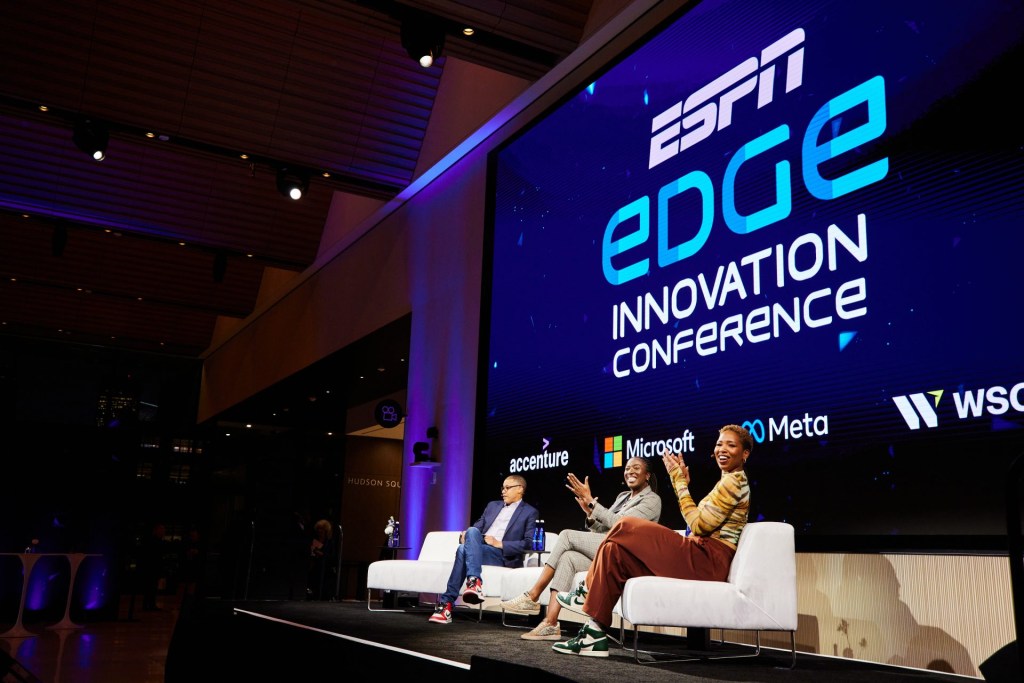
Image via the Seattle Seahawks
Digital marketing and social media professionals sometimes slip into a zone during their respective regular seasons where it seems like there’s not enough time to create all the content they want. When it seems like something’s always happening, teams aren’t running short on inspiration for keeping sports fans engaged. However, when the offseason rolls around, there can be a challenge in putting together a content plan to keep social channels active and vibrant.
The good news is your social platforms don’t have to lose value just because your team is off the field or court for a few months. The first step to combating this is to have a great strategy in place for those periods of time. When assembling that game plan, industry professionals recommend keeping a few key things in mind.
[the_ad_group id=”948″]
First, plan around key dates within your sport. For example, the NBA Draft gave college basketball programs the opportunity to highlight their former players in the current draft class and those who have been picked in the past. Events such as the NBA Finals and NBA Summer League also fall into this category.
From a recruiting standpoint, telling these stories serves a major purpose in showing potential student-athletes what being a part of those college programs can do for them. This is why you’ll see so many programs making content celebrating their players around these times.
“There’s nobody like him… Nobody”#APlayersProgram pic.twitter.com/S4oRV6rg4T
— Arizona Basketball (@ArizonaMBB) June 15, 2018
Overall, when it comes to key dates, keeping a calendar of everything that warrants being part of the conversation is a great way to stay on top of things. Joey Gardner, who began a role with Creighton Athletics as their Assistant Director of Marketing for Multimedia and Design after several years with the University of Dayton, recommends this approach.
“When it comes to key dates, having a calendar of major events is huge. These past two weeks we have had the MLB Draft, the CWS, the NBA Draft, and our volleyball team is in Europe right now, so we tend to plan as much content out that we can.”
Alright Bluejay fans, we are two days out from the 2018 @NBADraft. Where do you think @Khyri_2 lands? Screenshot and let's see your pick below! #GoJays #ProJays #Creighton #NBADraft @BIGEASTMBB pic.twitter.com/ZyDAqvkSbT
— Creighton Men’s Basketball (@BluejayMBB) June 19, 2018
Team Infographics has helped organizations create content since 2012 and has seen firsthand the benefits of having a thorough plan in place for this time of year.
“When it comes to the offseason, we are big fans of planning as much as possible down to every specific detail,” said Joe Centeno, Team Infographics’ co-founder and art director. “Just as you have rundowns or gameday scripts, it is so important to layout your overall plan and schedule. The quality of your work is elevated and your goals are always in focus. This also helps with those moments/events that come up unexpectedly. The more you and your team have a clear offseason game plan in place, the better prepared you are for a successful season.”
Second, it can be harder to keep fans engaged in the offseason, especially when the stories surrounding the team aren’t exactly earth-shattering. This is where community participation may need to be encouraged within the content. An example of something along these lines would be polls, quizzes, or some other form of questionnaire.
This lesson applies to media outlets/companies as well. In the summer, college sports sites such as SB Nation-affiliate One Foot Down will frequently publish “Mailbags” in which they take audience questions and answer them in an easily digestible article.
OFD Notre Dame Mailbag: Playoffs, National Titles, And The Sneaky Rob Lowe https://t.co/hdfLe0WhWg
— One Foot Down (@OneFootDown) June 8, 2018
“It’s important to remember that people are busy with work and play in the summer,” said One Foot Down’s site manager Joshua Vowles. “New content should be there for them every day but as smaller pieces that are more easily consumed. I like to experiment with different kinds of fun pieces in the offseason, or a deep dive on a certain topic.”
Audience participation can also be encouraged in other ways, such as asking fans for stories or memories. Sometimes their stories can even inspire ideas for other pieces of content down the road.
Next, while they can be hard to predict at times, remember that there will be changes within the organization. Players will be waived, coaches will be hired, free agents will look for new homes. It doesn’t hurt to start thinking about what your first steps will be when these things happen. For instance, while it’s true that we don’t know where LeBron James will go just yet, I’d be willing to bet there are multiple NBA teams out there who already have an idea what their “Welcome LeBron” graphic will look like.
In another example, Arsenal recently announced that club legend Jack Wilshere would leave the team at the end of June. Going beyond just a press release containing the announcement, they posted highlights of his best plays from his 17 years with the team, produced a retrospective video, and asked for fans to send Wilshere well wishes on Twitter. Those responses were then compiled into a Twitter moment for all to see. In the case of a major move like that, the moment needs to be treated with the gravitas that it deserves.
For your love, for your commitment and fighting spirit, for THAT Norwich goal, for the FA Cups, for the 2013/14 goal of the season, for the 2014/15 goal of the season, for the 197 appearances, for the 17 years and for just being you…
THANK YOU @JACKWILSHERE ❤️#GoodLuckJack pic.twitter.com/bcHCPcxqpn
— Arsenal (@Arsenal) June 19, 2018
Finally, it’s never too early to think about next season. Your fans have that week one/opening night game circled on the calendar already anyway. So keep the hype train rolling. Preview your new players. Talk about the schedule or ticket specials happening. Keep people thinking about the big return of their team all throughout the offseason. Plus, for college athletics, this time of year can be great for getting ahead of the game on fall content, the teasing of which can be incorporated into your summer plans. Gardner has wasted no time in getting prepared for fall in his role at Creighton.
“We have been working on our style guide and look over the past couple of weeks and will have that finished up in the next couple of days,” Gardner said. “We have also had the luxury of volleyball being on campus before they left for Europe and a couple of soccer players, so we have already taken care of their photo shoot and will have materials ready by mid-to-late July. That will allow us to begin to focus on the other sports and take an early look at basketball before the students are even back on campus.”
You can find the full schedule at https://t.co/uQGf3INb9u
Here's some thoughts on the schedule by Kirsten Bernthal Booth: #GoJays #NCAAVolleyball pic.twitter.com/2nk5ST0ePN
— Creighton Volleyball (@CreightonVB) May 1, 2018
Christopher Stoney, digital media designer for the Seattle Seahawks, has been busy this offseason showcasing the team’s latest additions to get fans excited for the fall.
“Looking ahead at next season, it’s extremely exciting. The offseason was filled with news about us, both good and bad. And we have a lot of new faces in the locker room, which immediately makes me think of potential content ideas. So we get to know guys, we get to introduce our fans to these guys, and we get to celebrate our season with them.”

Brandon Marshall was one of Seattle’s key additions this year and Stoney and company have capitalized on it.
As content creators and social media professionals, preparation is key when keeping audiences excited both in and out of season.
Are there specific organizations that capitalize on engagement especially well during the offseason and deserve to be featured on Front Office Sports? Let us know on Twitter @frntofficesport!
















